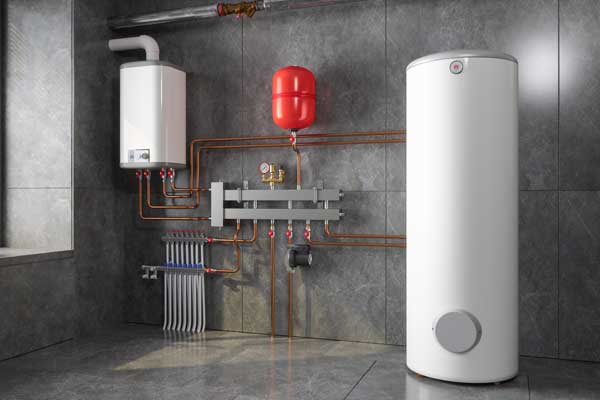Everybody maintains their own way of thinking involving How to Maintain Your Water Heater & Prolong its Life.

Hot water is essential for everyday comfort, whether it's for a revitalizing shower or washing meals. To guarantee your hot water system runs successfully and lasts longer, normal maintenance is crucial. This article supplies practical suggestions and insights on exactly how to maintain your home's warm water system to prevent interruptions and pricey repair work.
Intro
Keeping your home's hot water system may appear challenging, however with a few basic actions, you can ensure it operates smoothly for several years to come. This guide covers every little thing from understanding your hot water system to DIY upkeep pointers and knowing when to contact specialist help.
Value of Keeping Your Warm Water System
Regular maintenance not only prolongs the life expectancy of your warm water system but also ensures it operates effectively. Disregarding upkeep can cause lowered performance, greater power bills, and even premature failure of the system.
Indicators Your Warm Water System Demands Maintenance
Recognizing when your hot water system needs interest can prevent major issues. Look out for indicators such as irregular water temperature, unusual sounds from the heating unit, or rustic water.
Recognizing Your Hot Water System
Before diving right into upkeep jobs, it's handy to understand the basic components of your hot water system. Typically, this includes the water heater itself, pipes, anode rods, and temperature controls.
Monthly Maintenance Tasks
Normal month-to-month checks can help capture small concerns prior to they intensify.
Flushing the Water Heater
Flushing your water heater removes debris build-up, boosting effectiveness and extending its life.
Checking and Replacing Anode Rods
Anode rods prevent deterioration inside the container. Evaluating and changing them when worn is essential.
Examining and Adjusting Temperature Setups
Changing the temperature settings makes certain ideal efficiency and security.
DIY Tips for Upkeep
You can do a number of maintenance jobs on your own to keep your warm water system in leading condition.
Looking for Leakages
Frequently examine pipes and links for leakages, as these can lead to water damages and greater bills.
Examining Pressure Relief Valves
Testing the stress relief valve guarantees it works correctly and stops excessive pressure build-up.
Insulating Pipelines
Protecting warm water pipes lowers warm loss and can save power.
When to Call an Expert
While do it yourself maintenance is beneficial, some problems require expert knowledge.
Facility Problems Calling For Professional Assistance
Instances include significant leakages, electric issues, or if your water heater is consistently underperforming.
Routine Expert Upkeep Benefits
Specialist upkeep can include extensive examinations, tune-ups, and ensuring compliance with safety and security standards.
Final thought
Normal upkeep of your home's warm water system is essential for effectiveness, long life, and cost financial savings. By adhering to these suggestions and knowing when to seek specialist aid, you can guarantee a trusted supply of hot water without unforeseen interruptions.
How to Maintain an Instant Hot Water Heater
Before tinkering with your hot water heater, make sure that it’s not powered on. You also have to turn off the main circuit breaker and shut off the main gas line to prevent accidents. Also turn off the water valves connected to your unit to prevent water from flowing into and out of the appliance. 2. When you’re done, you have to detach the purge valves’ caps. These look like the letter “T” and are situated on either side of the water valves. Doing so will release any pressure that has accumulated inside the valves while at the same time avoid hot water from shooting out and burning your skin. 3. When the purge valves’ caps are removed, you have to connect your hosing lines to the valves. Your unit should have come with three hoses but if it didn’t, you can purchase these things from any hardware or home repair shops. You can also get them from retail stores that sell water heating systems. Read the user’s manual and follow it to complete this task properly. When the hosing lines are connected, open the purge port’s valves. 4. You should never use harsh chemical cleaners or solutions when cleaning your unit. Make use of white vinegar instead. It should be undiluted and you’ll probably use about 2 gallons. 5. Now flush your water heater. This task should probably take about 40 minutes. We can’t give you specific directions for this because the procedure is carried out depending on the type, model and brand of your heater. With that being said, refer to the user’s manual. 6. When you’re done draining the unit, you have to turn off the purge port valves again. Remove the hosing lines that you earlier installed on each of the water valves. Put the valve caps (purge port) back in their respective places and be very careful so as not to damage the rubber discs that are found inside these caps. 7. Now that everything’s back in place, check your user’s manual again to find out how to reactivate your water heating system. 8. Once it is working, turn one of your hot water faucets on just to let air pass through the heater’s water supply pipes. Leave the tap on until water flows smoothly out of it. https://www.orrplumbing.com/blog/2014/september/how-to-maintain-an-instant-hot-water-heater/

Do you really like reading up on Water Heater Maintenance Tips You Can't Afford to Forget? Try to leave feedback down the page. We'd be pleased to hear your ideas about this write-up. We hope that you visit us again in the near future. In case you enjoyed reading our blog post kindly be sure to share it. Thanks so much for your time spent reading it.
Call Today